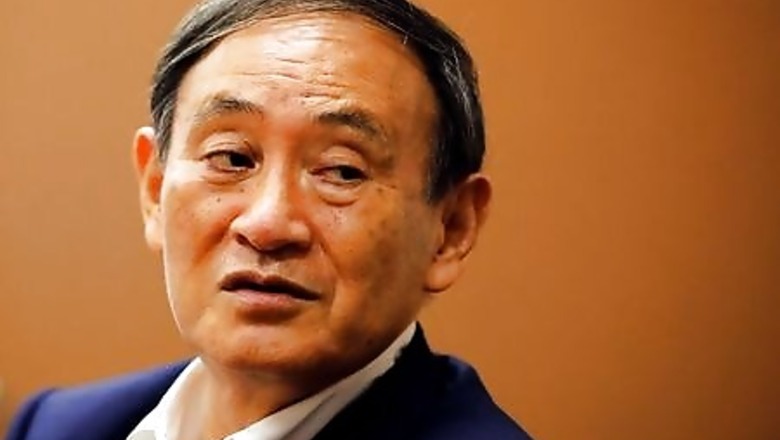
views
TOKYO: The growing likelihood that Yoshihide Suga will succeed Shinzo Abe as Japan’s new premier may be a mixed blessing for the country’s central bank.
As Abe’s key lieutenant and the government’s top spokesman, Suga is a safe pair of hands and has a thorough knowledge of the Bank of Japan’s policy framework, but he also knows how to pressure the bank into action.
With Suga solidifying support within the country’s ruling party ahead of a leadership election later this month, Tokyo stocks have rallied on expectations Abe’s pro-growth policies will be maintained.
The central bank, locked in a battle to cushion the blow from the coronavirus pandemic, sees little need for policy change regardless of who becomes next prime minister, sources familiar with its thinking say.
Suga, in particular, could maintain the status quo if he takes the helm, given the key role he played in pushing through “Abenomics”, which sought to spur growth with bold monetary easing, fiscal spending and structural reforms.
“He has a deep understanding of the BOJ’s policies, so the likelihood of policy continuity will heighten,” one of the sources said.
“A Suga administration would maintain most of Abe’s policies,” including its stance on monetary policy, said a second source.
For BOJ policymakers, Suga is a familiar face who is unlikely to bully the central bank with explicit demands for radical measures, the sources say.
However, armed with a strong grip on Tokyo’s bureaucracy and a deep knowledge of Abe’s economic policies, Suga may prove to be a tough negotiator for the BOJ if conditions worsen, as it struggles to battle economic headwinds with a dwindling toolkit.
“The BOJ comes under little pressure when markets are calm. That changes when markets turn volatile,” said a third source.
Sharing Abe’s sensitivity to financial market upheavals, especially sharp rises in the yen, Suga in 2016 created a framework for joint BOJ, finance ministry and banking regulator meetings at times of volatility, helping Tokyo signal to investors its alarm over market moves.
People with direct knowledge of the matter say Suga was among those who urged the BOJ to act when an unwelcome spike in the yen hit Japan’s export-oriented economy in early 2016. The central bank adopted negative interest rates in January of that year.
A government focus on keeping sharp yen rises in check will also be sustained under the new administration if Finance Minister Taro Aso – who as a former premier holds bitter memories of battling a yen spike that crushed the economy – retains his post, said John Vail, chief global strategist at Nikko Asset Management.
“There is little reason to expect Suga would disagree with such (aversion to sharp yen rises), and perhaps might even push for more yen-weakening policies,” he said.
‘HAND IN HAND’
Abe’s administration has praised the BOJ for moving in lockstep with the government by easing monetary policy twice so far this year to cushion the pandemic’s blow on the economy.
Many BOJ officials feel they have done enough for now given the rising cost and diminishing returns of further easing, and are cautious of ramping up stimulus too hastily, particularly by cutting already ultra-low interest rates, the sources say.
But Suga isn’t buying arguments against rate cuts, such as the negative effects of low rates on bank profits.
In an interview with Reuters last week, he countered the view that prolonged ultra-low rates were to blame for the plight of regional banks, calling instead for more consolidation among the lenders to streamline operations.
He also stressed the need for the BOJ to work hand in hand with the government, signaling his hope that the central bank will continue to assist government efforts to support growth.
“We’re always acting closely and pre-emptively with the BOJ,” Suga said, when asked whether the BOJ should ease further if the government were to compile another stimulus package.
“It’s very important that the two sides act together.”
Disclaimer: This post has been auto-published from an agency feed without any modifications to the text and has not been reviewed by an editor


















Comments
0 comment